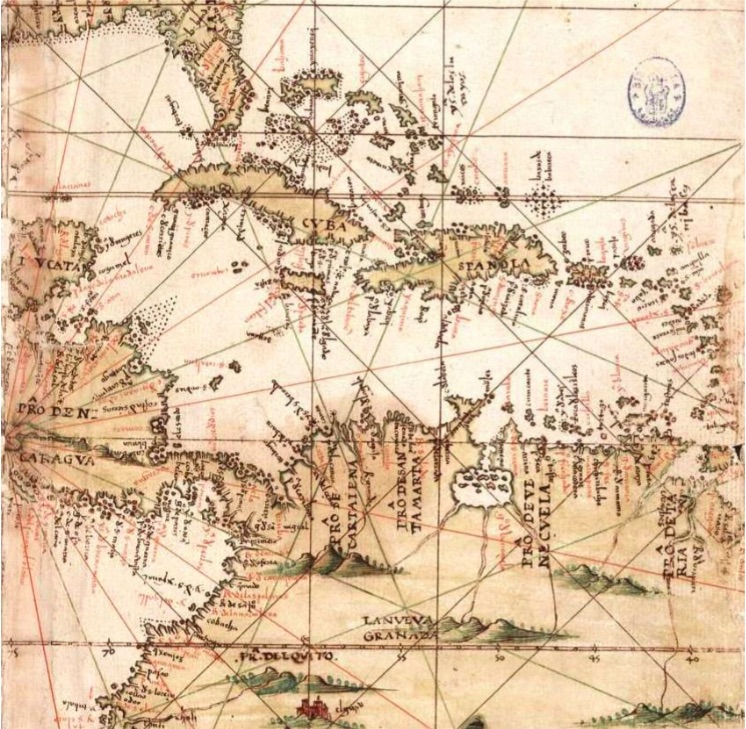The Economy of Privilege
Montserrat Cachero Vinuesa
Universidad Pablo de Olavide, Center for History and Economics
Research Project: Poly-centric States, HAR2013-45357-P
This research project analyzes the political, legal, and economic institution of privilege by examining the prerogatives granted by the Spanish Crown for the colonization of the New World. The conditions of Spanish sovereignty in the Americas, as specified under the papal bull, entailed the responsibility of settling, populating, and evangelizing these new territories. The Crown used privileges as an incentive to attract private resources for undertaking these tasks, since it did not have the means to do so independently.
Through various collections of Royal Decrees and legal dispositions dictated by the Spanish Monarchy, this project maps out the economic and political prerogatives pertaining to the provinces of Hispaniola, Venezuela, Santa Marta, Cartagena, Margarita, Cumaná, Cubagua and Nueva Andalucía (provinces of Paria and Marañón), as seen in the map below.

Source: Map of Alonso de Santa Cruz (1505-1567), Spanish National Library, Madrid
The period under analysis extends from 1492 to 1556, the year in which Charles V abdicated. In the different sets of royal decrees under analysis, we have found more than 500 privileges granted to nearly 250 individuals. The information was then coded and organized in a database. The project uses Gephi to map this network, where nodes represent agents and edges connections between them. Each node was sized according to the number of privileges received. Colors represent the destination of the privileges. The following table describes the colors used and the percentage of privileges granted for every province.

Source: Own elaboration on the basis of Royal Decrees
Three main communities emerge from this graph: individuals close to the Emperor, those close to Queen Isabel, and agents negotiating with both sovereigns.
On the map, the bigger nodes are those positioned between the king and the queen. The ability of these individuals to bargain with different authorities was precisely what explains their success in negotiating privileges within the Spanish Empire. In the social network analysis literature this is often measured through a metric called betweenness centrality, which is defined as the number of times a node acts as a bridge between others. High betweenness centrality is associated with being in the position to observe or control the flow of information and goods.
The importance of betweenness centrality is best explained in the specific context of this historical period. The first half of the 16th century was a politically tumultuous period, and the king had to be absent from the Court quite often. While agents with links only to the monarch had to wait for his return, expending time and resources in the meantime, agents who were also connected to regents or other authorities were able to negotiate for privileges even in his absence. That was the case of Heinrich Ehinger or Hieronymus Sayler, representatives of the famous Welser company.
Additionally, the graph shows non-linked nodes. These dots represent agents who did not succeed in procuring financial resources and had to renounce the privilege initially granted. This situation was not unusual, especially for privileges that required large investments, such as territorial exploration. We can also observe separate groups in the peripheries and apart from the king and the queen. These represent the activity of councilors and regents as privilege grantors. Nodes linking those separate groups with the central clusters are agents who received privileges from different authorities.
This visualization is part of an ongoing project that examines the distribution of economic and political power in the Iberian Atlantic. Our analysis of the negotiation process between the metropole and the periphery reveals that while the sovereign had the power to decide and legislate, the power to apply such decisions rested with the local authorities. This flexibility is what would characterize the so-called “Iberian poly-centric model", as distinguished from the more centralized models of the British and French States.
Montserrat Cachero Vinuesa is assistant professor at Universidad Pablo de Olavide. She was a visiting fellow at the Joint Center for History and Economics at Harvard in the 2015/16 academic year.
